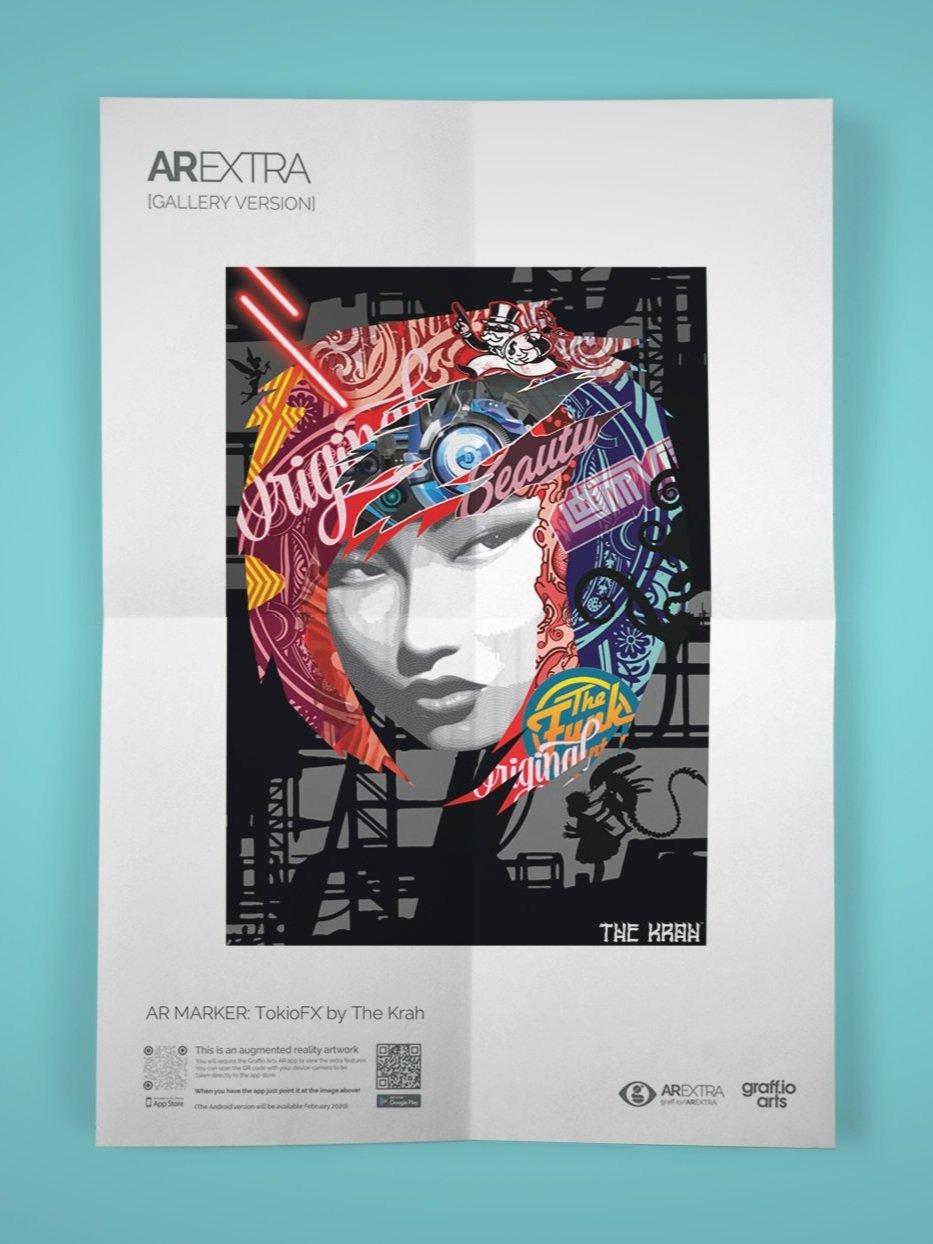An Exhibition about Technology and Worthless Art
We were asked by LCB if we had anything for an exhibition for their Lightroom Gallery. AREXTRA Street had just launched as posters aimed at the general public. Those posters were printed onto durable, self-adhesive vinyl, designed to be plastered across empty shop windows. How would we take that into a gallery situation? Would it be appropriate?
FROM THE STREET TO THE GALLERY
AREXTRA [Street version] was a vehicle that used augmented reality to increase exposure to the arts for the general public. This was a system where people walking through the streets of the city could experience the arts without having to visit a gallery. The audience had now changed and now expected to be confronted by the arts.
This was an opportunity to engage with some of the big questions that arise from augmenting art. In this situation a 2D representation of the work is recognised by the technology and used as the platform for augmentation. Traditionally a piece of work within a gallery is considered to be an object. That object is assumed to be loaded with cultural worth. A set of factors are used to agree a monetary worth.
Augmented reality doesn’t play by these rules.
A painting, traditionally using a canvas as the place where paint is applied is now read as an image. Our understanding, development and agreed rules of engagement with painting have changed over time. It could be argued that painting was used in illustrative terms, as imagery at certain points in history but through the 20th century we have developed a sophistication and engagement that recognises the application of paint to a surface as a the battleground where an artists fights through their practice.
The results of this are hung on a wall where this creative fight, the development of their practice is evidenced and forms part of a larger conversation.
AR ignores the physicality of the work and uses a snapshot as the basis for something else. The viewers experience is largely of this something else.
To draw attention to these issues we stripped the art of traditional cultural and monetary value- we called each piece a marker (the thing that AR technology recognises). We printed these onto sheets of paper of a unified size and pinned them to the wall. After the exhibition these sheets of paper had performed their job and were destroyed. Viewers could view the exhibition with our AR app and explore the augmented reality layers- the new focus for this work in this context.
We used Lewis Carroll’s excerpt from Alice in Wonderland to highlight the idea that the genie is out of the bottle. New media technology continues to change the way we interact with the world around us. More and more of our experience of the world is going to be mediated and that includes our experience of the arts.
How would we like to proceed?
THE MARKERS
Goldfinch by Lucy Stevens
Tropics by Alexandru Cinean
Untitled by Cibo
Foliage Tree by Mono
TokioFX by The Krah
Mountains by Paraskevi Papagianni
Untitled by Kris Trigg
Meteora by Cibo
Lights Out by Tyler Spangler











